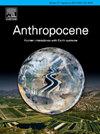Perception and drivers of cultural ecosystem services in waterfront green spaces: Insights from social media text analysis
IF 3.3
2区 地球科学
Q2 ENVIRONMENTAL SCIENCES
引用次数: 0
Abstract
With urbanization accelerating, waterfront green spaces—as critical interfaces between nature and human systems—play an essential role in delivering cultural ecosystem services (CES) that support sustainable urban development. This study employed content analysis and text mining techniques on social media platforms to collect 102,586 user-generated comments on 51 waterfront green spaces along the Huangpu River and Suzhou Creek in Shanghai, China. We constructed CES and landscape element dictionaries, applied sentiment analysis to measure emotional responses, and classified user reviews by CES frequency. Key influencing factors were identified through multiple linear regression. The findings reveal that: (1) Ten CES categories were identified, and the public generally expressed a positive attitude toward the CES provided by waterfront green spaces, with an average satisfaction score of 90.14 %. The perception frequencies of recreation (0.68), aesthetic (0.67), and naturalist (0.62) emerged as the primary motivations for visitation; (2) Waterfront green spaces were categorized into four types based on CES perception frequencies: history and culture-led, sports and health-led, naturalist-led, and CES-balanced spaces; (3) Key factors influencing public satisfaction were identified. Among natural landscape elements, flowers and lawns, water bodies, and topography and rocking formations contributed to satisfaction in three CES categories. Among artificial elements, roads and squares, built structures, and transportation facilities were linked to satisfaction in five, four, and three CES categories, respectively. Interestingly, pets also emerged as a notable factor, contributing to satisfaction in five CES categories. This study provides empirical insights into public CES preferences and offers practical guidance for the planning and management of waterfront green spaces.
滨水绿地文化生态系统服务的感知与驱动:来自社交媒体文本分析的见解
随着城市化进程的加快,滨水绿地作为连接自然与人类系统的关键接口,在提供文化生态系统服务(CES)、支持城市可持续发展方面发挥着至关重要的作用。本研究采用社交媒体平台上的内容分析和文本挖掘技术,收集了中国上海黄浦江和苏州河沿岸51个滨水绿地的102586条用户评论。我们构建了CES和景观元素词典,应用情感分析来衡量情绪反应,并根据CES频率对用户评论进行分类。通过多元线性回归分析,确定了关键影响因素。研究发现:(1)公众对滨水绿地提供的消费体验总体持肯定态度,平均满意度为90.14 %;游憩(0.68)、审美(0.67)和自然(0.62)是游客的主要动机;(2)基于CES感知频率,将滨水绿地划分为历史文化主导、运动健康主导、自然主义主导和CES平衡空间4种类型;(3)确定影响公众满意度的关键因素。在自然景观要素中,花卉和草坪、水体、地形和岩层对三个CES类别的满意度有所贡献。在人工要素中,道路和广场、建筑物、交通设施分别在5、4、3个CES项目中与满意度相关。有趣的是,宠物也是一个值得注意的因素,在CES的五个类别中都对满意度有贡献。本研究提供了公众消费空间偏好的实证见解,并为滨水绿地的规划与管理提供了实践指导。
本文章由计算机程序翻译,如有差异,请以英文原文为准。
求助全文
约1分钟内获得全文
求助全文
来源期刊

Anthropocene
Earth and Planetary Sciences-Earth and Planetary Sciences (miscellaneous)
CiteScore
6.30
自引率
0.00%
发文量
27
审稿时长
102 days
期刊介绍:
Anthropocene is an interdisciplinary journal that publishes peer-reviewed works addressing the nature, scale, and extent of interactions that people have with Earth processes and systems. The scope of the journal includes the significance of human activities in altering Earth’s landscapes, oceans, the atmosphere, cryosphere, and ecosystems over a range of time and space scales - from global phenomena over geologic eras to single isolated events - including the linkages, couplings, and feedbacks among physical, chemical, and biological components of Earth systems. The journal also addresses how such alterations can have profound effects on, and implications for, human society. As the scale and pace of human interactions with Earth systems have intensified in recent decades, understanding human-induced alterations in the past and present is critical to our ability to anticipate, mitigate, and adapt to changes in the future. The journal aims to provide a venue to focus research findings, discussions, and debates toward advancing predictive understanding of human interactions with Earth systems - one of the grand challenges of our time.
 求助内容:
求助内容: 应助结果提醒方式:
应助结果提醒方式:


